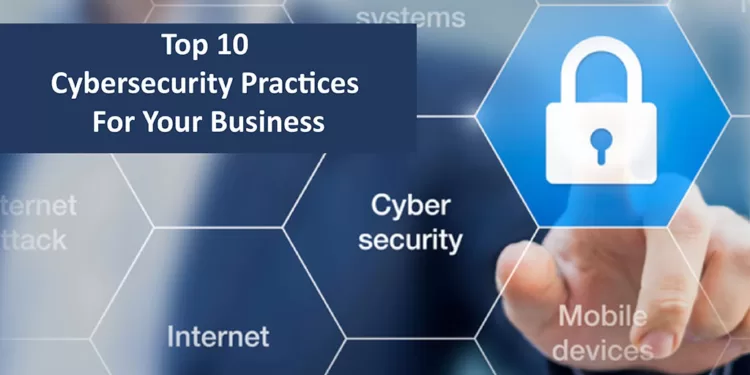10 Essential Cybersecurity Practices
Cybersecurity is a crucial aspect of any business. For small businesses, the stakes are even higher due to limited resources and the potentially devastating effects of a cyber attack. Here are 10 essential cybersecurity practices that every small business should implement.
1. Regularly Update and Patch Systems
Regular updates and patches are your first line of defense against cyber threats. They fix vulnerabilities in your systems that hackers can exploit. Ensure all software, including operating systems and applications, are up-to-date. This includes everything from your email client to your financial software. Regularly scheduled updates can help protect your business from the latest known threats.
2. Use Strong, Unique Passwords
Strong, unique passwords are crucial for protecting your business. Encourage employees to use passwords that are long, complex, and not easily guessable. Consider using a password manager for added security. Password managers can generate and store complex passwords, reducing the risk of human error.
3. Implement Multi-Factor Authentication
Multi-factor authentication (MFA) adds an extra layer of security by requiring users to provide two or more verification factors to gain access to a resource. This could be something they know (like a password), something they have (like a physical token or a smartphone), or something they are (like a fingerprint or facial recognition).
4. Regular Backups
Regularly back up critical data to an offsite location. This practice helps safeguard your business by providing a way to restore your data in case of a cyber attack or data loss. Regular backups also protect against accidental deletion, hardware failures, and natural disasters.
5. Employee Training
Employees are often the weakest link in your cybersecurity chain. Regular cybersecurity training can help them recognize and avoid potential threats like phishing emails and malicious websites. Training should be ongoing and updated as new threats emerge.
6. Firewalls and Antivirus Software
Use firewalls to block unauthorized access to your network and antivirus software to detect and remove malicious software. These tools are your business’s primary defense against threats and should be kept up-to-date to protect against the latest known threats.
7. Secure Wi-Fi Networks
If your business uses Wi-Fi, ensure it’s secure, encrypted, and hidden. An unsecured Wi-Fi network is an easy target for cybercriminals. Use strong encryption (like WPA2 or WPA3), hide your network from public view, and change your network’s default name and password.
8. Limit Employee Access to Data
Not every employee needs access to all your information. Limit access to sensitive data to only those who need it. This principle, known as the principle of least privilege (PoLP), can reduce the risk of an internal data breach.
9. Regular Security Audits
Regular security audits can help identify vulnerabilities in your system and ensure you’re following best cybersecurity practices. These audits can be conducted by internal staff or outsourced to professional auditors.
10. Incident Response Plan
Finally, have an incident response plan in place. This plan outlines the steps your business will take in the event of a cyber attack, helping to minimize damage and recovery time. The plan should include steps for identifying and reporting the incident, recovering data, restoring systems, and notifying affected parties.
By implementing these practices,you can significantly reduce your risk of falling victim to costly and damaging cyber attacks. Remember, cybersecurity is not a one-time effort but an ongoing process. Stay vigilant, stay informed, and stay safe.










Leave a Reply